TRACERS (Tandem Reconnection and Cusp Electrodynamics Reconnaissance Satellites)
EO
NASA
Planned
Planned for launch in February 2024, the Tandem Reconnection and Cusp Electrodynamics Reconnaissance Satellites (TRACERS) mission is a constellation of two satellites, owned and operated by the National Aeronautics and Space Administration (NASA). The mission aims to study the origins of solar wind and its effects on Earth.
Quick facts
Overview
| Mission type | EO |
| Agency | NASA |
| Mission status | Planned |

Summary
Mission Capabilities
The TRACERS sensor complement consists of five instruments: the Analyser for Cusp Ions (ACI), the Analyser for Cusp Electrons (ACE), a DC Magnetometer (MAG), a Magnetic Search Coil or Search Coil Magnetometer (MSC) and a Electric field Instrument (EFI). ACI aims to measure and characterise oxygen, helium and other cusp ions, while ACE aims to take measurements of cusp of electrons, and MAG will provide measurements of the background magnetic field. Furthermore, MSC will measure AC magnetic fields and EFI will take measurements of the electric fields orthogonal to Earth’s background magnetic fields.
Performance Specifications
ACI will measure cusp ions from 50 eV to 10 keV, with a temporal resolution of less than 500 ms, and over a 180° plane of ion directions. Meanwhile, ACE has a temporal resolution of below 100 ms, across a 210° plane of electron directions, with an electron volt range of 40 eV to 10 keV. EFI takes measurements at both low frequencies of up to 1000 Hz to determine convection, and at higher frequencies of 0.3 - 5.0 MHz to measure upper hybrid emissions, which allows determination of background plasma density. MAG provides magnetic field measurements up to 5 Hz, while MSC provides field measurements from 2 Hz up to 1 kHz.
Both TRACERS satellites will operate in a Low Earth orbit (LEO).
Space and Hardware Components
MSS (Millennium Space Systems), a Boeing Company in El Segundo, CA, was selected to develop and manufacture two ALTAIR spacecraft for the TRACERS mission. Each ALTAIR bus will provide navigation, propulsion, data processing and communications services for the five TRACERS science instruments.
Overview
The TRACERS mission consists of two identically instrumented satellites in the same low-Earth, sun-synchronous orbit with the spacecraft separated by 10-120 seconds along the orbital track. The mission was selected for implementation in June, 2019 by NASA as a Small Explorer class investigation (SMEX). The mission is led by Craig Kletzing at the University of Iowa in Iowa City. Not including rideshare costs, TRACERS is funded for no more than $115 million. 1) 2)
The overarching mission goal of the TRACERS mission is to connect the magnetospheric cusp to the magnetopause - discovering how spatial or temporal variations in magnetic reconnection drive cusp dynamics. To address this goal, the mission has three major scientific objectives:
• Determine whether magnetopause reconnection is primarily spatially or temporally variable for a range of solar wind conditions.
• For temporally varying reconnection, determine how the reconnection rate evolves.
• Determine to what extent dynamic structures in the cusp are associated with temporal versus spatial reconnection.
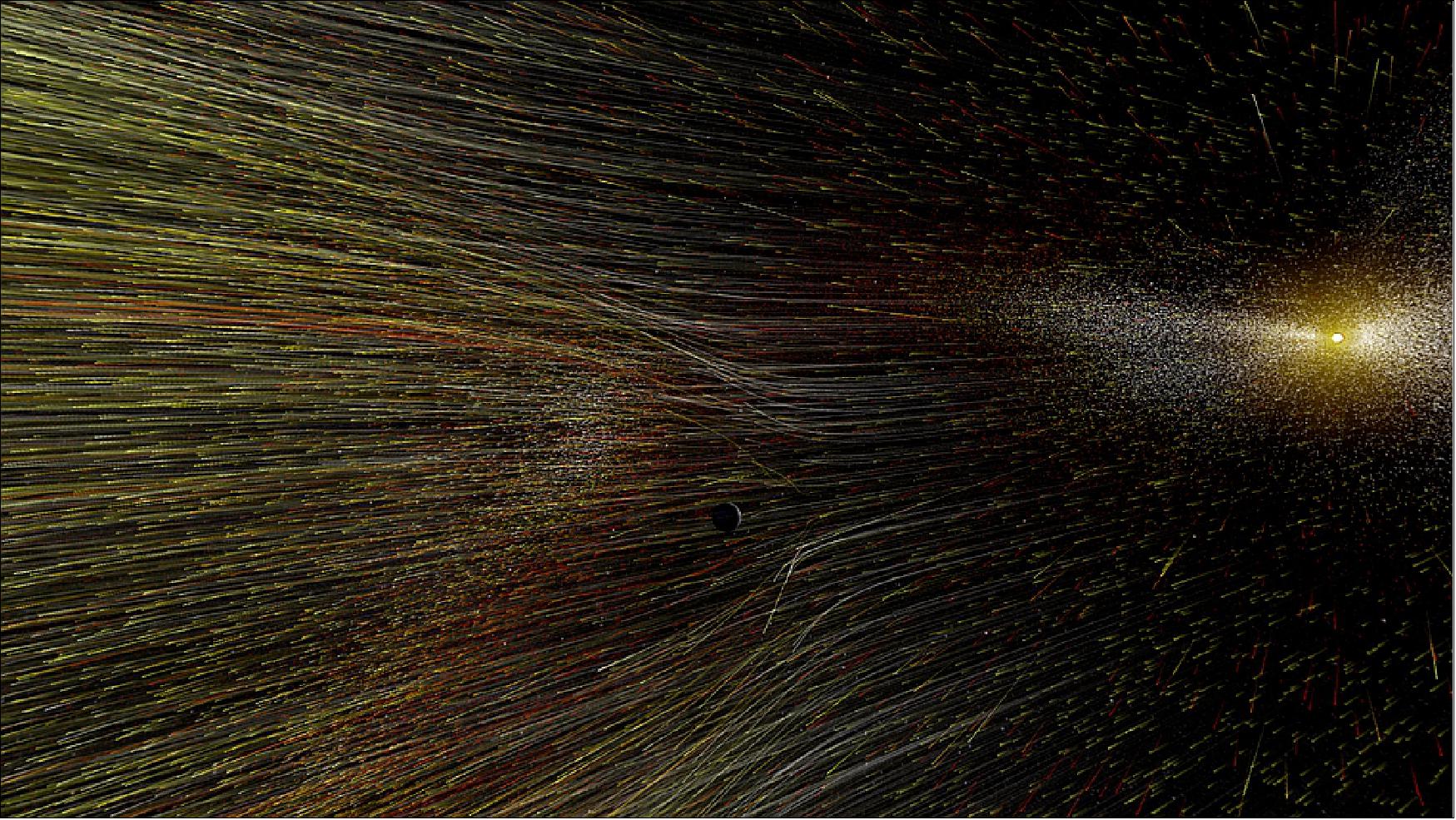
The TRACERS investigation was selected as a NASA-launched rideshare mission, meaning it will be launched as a secondary payload with PUNCH. NASA’s Science Mission Directorate is emphasising secondary payload missions as a way to obtain greater science return. TRACERS will observe particles and fields at the Earth’s northern magnetic cusp region – the region encircling Earth’s pole, where our planet’s magnetic field lines curve down toward Earth. Here, the field lines guide particles from the boundary between Earth’s magnetic field and interplanetary space down into the atmosphere.
In the cusp area, with its easy access to our boundary with interplanetary space, TRACERS will study how magnetic fields around Earth interact with those from the Sun. In a process known as magnetic reconnection, the field lines explosively reconfigure, sending particles out at speeds that can approach the speed of light. Some of these particles will be guided by the Earth’s field into the region where TRACERS can observe them.
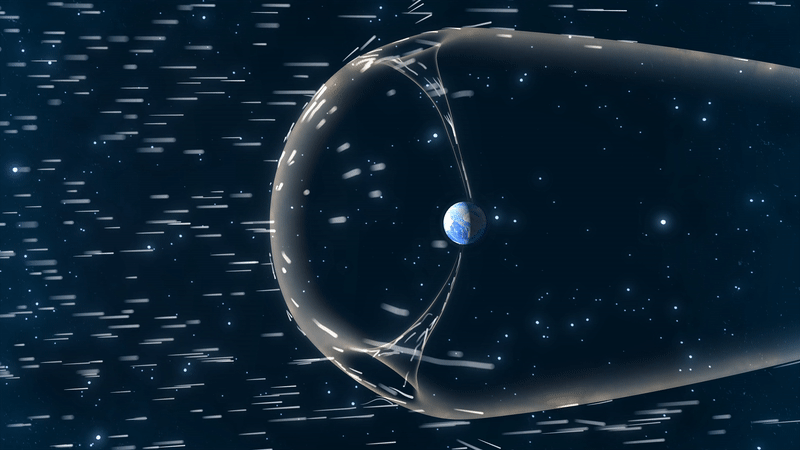
Magnetic reconnection drives energetic events all over the universe, including coronal mass ejections and solar flares on the Sun. It also allows particles from the solar wind to push into near-Earth space, driving the space weather experienced there. TRACERS will be the first space mission to explore this process in the cusp with two spacecraft, providing observations of how processes change over both space and time. The cusp vantage point also permits simultaneous observations of reconnection throughout near-Earth space. Thus, it can provide important context for NASA’s Magnetospheric Multiscale mission, which gathers detailed, high-speed observations as it flies through single reconnection events at a time.
To accomplish this scientific research, the TRACERS mission consists of two identical spacecraft making observations in the cusp in 500 km sun-synchronous circular orbits with the spacecraft separated by 10 - 120 seconds. TRACERS makes field and particle observations in the cusp (Figure 2). Statistical analysis of the orbit shows that TRACERS will have more than 3250 cusp encounters in the one year mission lifetime. Well-proven instruments and a good understanding of orbital characteristics allow for simple mission operations coupled with proven data analysis techniques backed by high-fidelity simulations. 3) 4)

Spacecraft
MSS (Millennium Space Systems), a Boeing Company in El Segundo, California, was selected to develop and manufacture two ALTAIR spacecraft for TRACERS. The company will also integrate, test and operate the spacecraft. With this award, MSS joins the select ranks of companies providing NASA science satellites. 5)
The University of Iowa’s Craig Kletzing, the principal investigator for the TRACERS mission, chose Millennium as the bus provider and integrator for his team through a competitive bidding process, and ultimately chose Millennium for their ability to meet the tight cost and schedule constraints of the Small Explorers (SMEX) program while offering satellites with very high capability and technology readiness levels. Millennium has supplied ALTAIR and AQUILA satellites to numerous government customers in the past, however TRACERS is the company’s first NASA science mission.
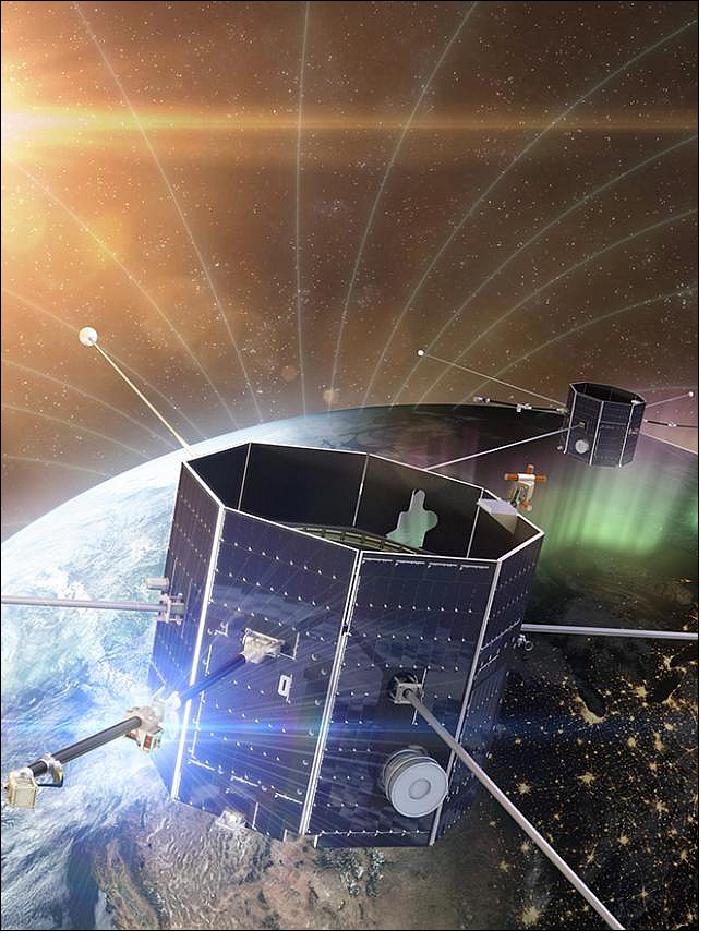
Each ALTAIR bus will provide navigation, propulsion, data processing and communications services for the five TRACERS science instruments. Together, the two observatories orbiting in formation will measure the time and position dependence of reconnection dynamics and variability of the magnetic field surrounding the Earth, providing a greater understanding of space weather which can affect astronauts, communications systems and even power grids.
TRACERS’ compact geometry and low mass enables its launch as a co-passenger with other satellite missions on one rocket, enabling NASA to deliver more science, more affordably for the Heliophysics SMEX program.
Project Partners
• SwRI (Southwest Research Institute): The TRACERS satellites are led by the University of Iowa (UI) and managed by SwRI of San Antonio, Texas. In addition to providing mission management and science services to UI, SwRI is developing the Analyzer for Cusp Ions (ACI) instrument, which will study how the magnetic fields of the Sun and the Earth interact through novel measurements in the polar cusps. Under a subcontract to Millennium Space Systems, SwRI is also managing the development of its two satellite bus platforms, supporting instrument integration and testing, and conducting mission operations. 6)
• MSS (Millennium Space Systems): MSS is providing the spacecraft bus for the two satellites.
• UCB (University of California Berkeley): Development of the EFI /Electric Field Instrument)
• UCLA (University of California Los Angeles): Development of the Magnetometer.
Launch
The TRACERS mission is planned for launch in February 2024, into a sun-synchronous orbit at an altitude of 500 km.
Mission Status
- May 2019: NASA funded the TRACERS project to study the mysterious, powerful interactions between the magnetic fields of the sun and Earth. The mission, led by Craig Kletzing, professor and Donald A. and Marie B. Gurnett Chair in the Department of Physics and Astronomy, received $115 million, making it the single largest externally funded research project in institutional history. 9)
- June 22, 2020: NASA has approved TRACERS to proceed to Phase B, which marks the transition from concept study to preliminary flight design. The satellites, led by the University of Iowa (UI) and managed by Southwest Research Institute, are set to launch in late 2023. 8) In addition to providing mission management and science services to UI, SwRI is developing the Analyzer for Cusp Ions (ACI) instrument, which will study how the magnetic fields of the Sun and the Earth interact through novel measurements in the polar cusps. Under a subcontract to Millennium Space Systems, SwRI is also managing the development of its two satellite bus platforms, supporting instrument integration and testing, and conducting mission operations.
- April 4, 2022: NASA's TRACERS mission passed a critical mission review (CMR) on March 31, 2022. The mission now moves into its next phase, advancing towards its target launch readiness date of July 27, 2024. 7) The review, Key Decision Point C, evaluated the mission’s preliminary design and program plan to achieve launch by its target launch readiness. With the successful review, TRACERS now moves into Phase C, which includes the final design of the mission and building of the two satellites.
Sensor Complement
The TRACERS sensor complement consists of five instruments, these being the Analyser for Cusp Ions (ACI), Analyser for Cusp Electrons (ACE), a DC Magnetometer (MAG), a Magnetic Search Coil or Search Coil Magnetometer (MSC) and a Electric field Instrument (EFI).

Analyser for Cusp Ions (ACI)
ACI, as seen in Figure 6, is an electrostatic analyser of Magnetospheric Multiscale (MMS) mission heritage, a NASA robotic space mission to study the Earth's magnetosphere. This instrument will measure cusp ions from 50 eV to 10 keV, with a temporal resolution of less than 500 ms, and over a 180° plane of ion directions. Employing the MMS Hot Plasma Composition Analyser, ACI will be able to measure and characterise oxygen, helium and other cusp ions, which are the signature of magnetic reconnection combined with convection.
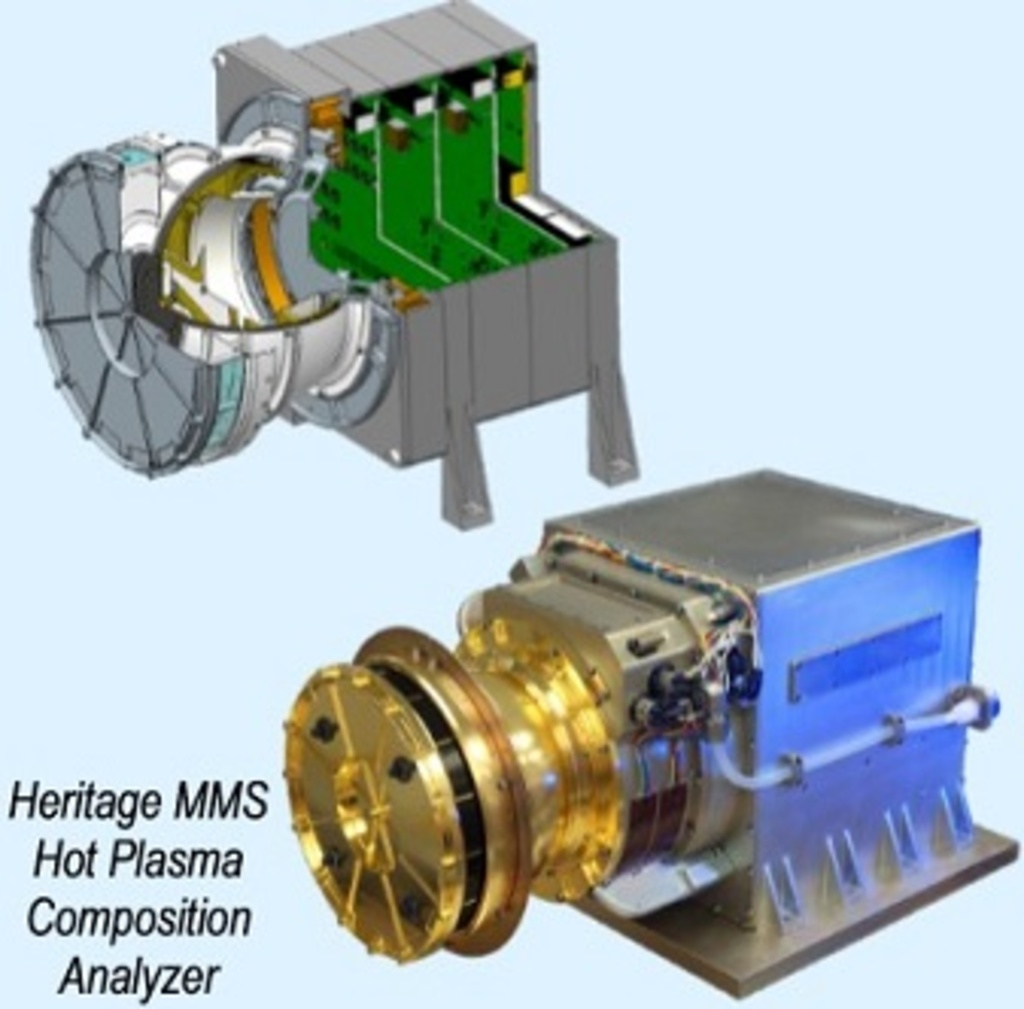
Analyser for Cusp Electrons (ACE)
ACE, shown in Figure 7, is also an electrostatic analyser, which aims to take measurements of cusp electrons, with an electron volt range of 40 eV to 10 keV. The instrument has a temporal resolution of below 100 ms, across a 210° plane of electron directions. ACE has been provided by the University of Iowa, and is designed to measure precipitating electrons. These are a sensitive tracer of magnetic field line topography in the cusps, which connect Earth to the space environment.
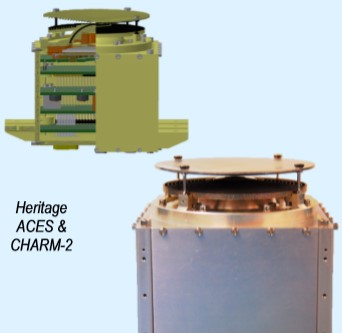
Electric Field Instrument (EFI)
EFI, shown in Figure 8, is a two-axis electric field instrument of DEMETER (Detection of Electro-Magnetic Emissions Transmitted from Earthquake Regions) heritage, the CNES (French Space Agency) operated microsatellite. EFI will take measurements of the electric fields orthogonal to Earth’s background magnetic fields at both low frequencies of 0 - 1000 Hz to determine their convection and at higher frequencies of 0.3 - 5.0 MHz to measure upper hybrid emissions, which allows determination of background plasma density. EFI has been supplied by the University of California, Berkeley.

DC Magnetometer (MAG)
The TRACERS mission will also carry two magnetometers, MAG, shown in Figure 9, is a fluxgate magnetometer, an instrument inherited from the Interior Exploration using Seismic Investigations, Geodesy and Heat Transport (InSight) mission. The instrument provides measurements of the background magnetic field up to 5 Hz, and has been provided by the University of California, Los Angeles.
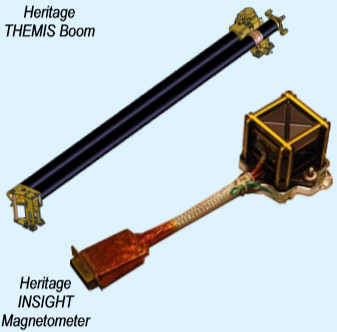
Magnetic Search Coil
MSC, shown in Figure 10, is a three-axis magnetic search coil. MSC will employ Van Allen probes to measure AC magnetic fields from 2 Hz up to 1 kHz for determination of the low frequency wave mode in the cusp, and has been provided by the University of Iowa.
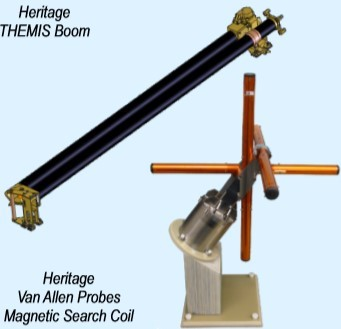
References
1) Grey Hautaluoma / Karen Fox, ”NASA Selects Missions to Study Our Sun, Its Effects on Space Weather,” NASA Press Release 19-047, 20 June 2019, URL: https://www.nasa.gov/press-release/nasa-selects-missions-to-study-our-sun-its-effects-on-space-weather
2) C. Kletzing, ”The Tandem Reconnection And Cusp Electrodynamics Reconnaissance Satellites (TRACERS) Mission,” Harvard, December 2019, URL: https://web.archive.org/web/20230628025349/https://ui.adsabs.harvard.edu/abs/2019AGUFM.A41U2687K/abstract
3) Richard C. Lewis, ”TRACERS – Tandem Reconnection and Cusp Electrodynamics Reconnaissance Satellites,” IOWA Now, 2 June 2020, URL: https://tracers.physics.uiowa.edu/
4) C. A. Kletzing, ”TRACERS: Tandem Reconnection and Cusp Electrodynamics Reconnaissance Satellites,” PPPL (Princeton Plasma Physics Laboratory) News, Princeton, NJ, TRACERS Seminar, 2 April 2021, URL: https://theory.pppl.gov/news/seminars/Kletzing040221.pdf
5) ”Millennium Space Systems to develop two satellites for NASA TRACERS science mission,” MSS, 2 July 2019, URL: https://www.millennium-space.com/media/millennium-space-systems-to-develop-two-satellites-for-nasa-tracers-science-mission
6) ”SwRI-managed TRACERS heliophysics mission enters Phase B,” EurekAlert News Release, 22 June 2020, URL: https://www.eurekalert.org/news-releases/755790
7) ”NASA’s TRACERS Mission Passes Key Milestone, Advances Toward Launch,” NASA TRACERS, 4 April 2022, URL: https://blogs.nasa.gov/tracers/
8) ”SwRI-managed TRACERS heliophysics mission enters Phase B,” SwRI, 22 June 2020, URL: https://www.swri.org/press-release/tracers-phase-b-heliophysics-magnetic-fields-aci
9) ”NASA-Iowa TRACERS project moves into next phase,” IOWA Now, 2 June 2020, URL: https://now.uiowa.edu/2020/06/nasa-iowa-tracers-project-moves-next-phase
10) Hatfield, Miles. “NASA's TRACERS Mission Passes Key Milestone, Advances Toward Launch – TRACERS.” NASA Blogs, 4 April 2022, https://blogs.nasa.gov/tracers/2022/04/04/nasas-tracers-mission-passes-key-milestone-advances-toward-launch/. Accessed 17 January 2023.
11) “TRACERS A, B (SMEX 16) - Gunter's Space Page.” Gunter's Space Page, https://space.skyrocket.de/doc_sdat/explorer_tracers.htm. Accessed 17 January 2023.
12) “TRACERS: NASA's Twin-Satellite Geomagnetic Storm Chasers.” Newton | Engineering & Product Development, https://www.thenewtoncorp.com/news/tracers-nasas-twin-satellite-geomagnetic-storm-chasers. Accessed 17 January 2023.
13) University of IOWA. TRACERS, https://tracers.physics.uiowa.edu/. Accessed 17 January 2023.
14) University of IOWA. “Instrumentation | TRACERS.” TRACERS, https://tracers.physics.uiowa.edu/instrumentation. Accessed 17 January 2023.